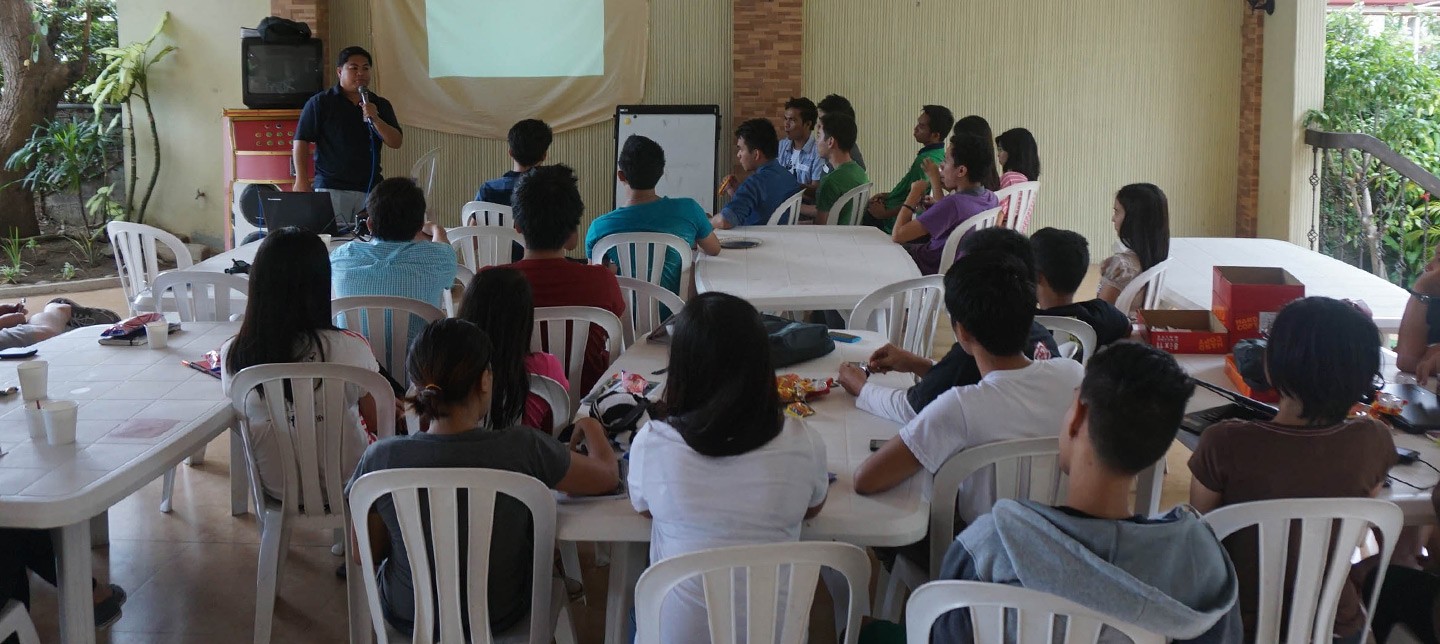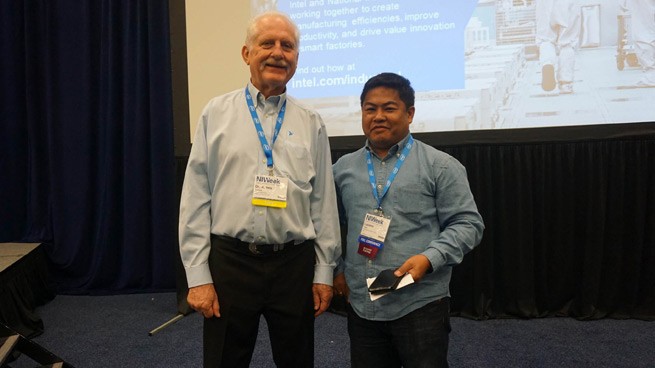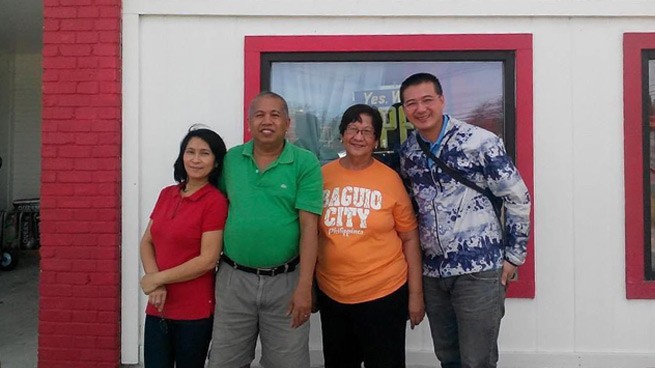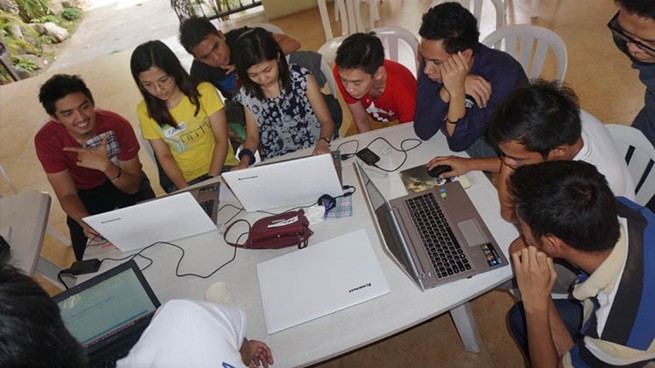
GP Synergia Technologies: Building a New LabVIEW Community
CUSTOMER STORY
LabVIEW | 11 MINUTE READ
GP Synergia’s innovative LabVIEW training program bridged a critical talent gap in the Philippines’ semiconductor market while boosting the local economy and changing the lives of a new generation of LabVIEW-certified engineers.
When it comes to LabVIEW, if you know, you know (IYKYK). LabVIEW’s graphical programming capabilities have achieved cult-like status in engineering circles because proficient LabVIEW users can develop complex test systems at a rate of productivity that far outmatches their peers.
Although LabVIEW is known for its intuitive approach, mastering all its features typically takes years. A robust pipeline of knowledgeable LabVIEW talent is critical to help organizations drive innovation, optimize operations, and ensure seamless integration of sophisticated test and measurement applications.
Luciano Tejano and his team at GP Synergia Technologies Corp (GP for short) have reset onboarding expectations, setting a new bar for the LabVIEW community through their Engineering Leadership Program. The extraordinary training program has produced more than 80 certified LabVIEW and TestStand developers and architects in record time while quadrupling GP’s revenue.
GP’s determination turned a challenging situation into an opportunity that resulted in far-reaching impacts: driving business growth, boosting the local economy, and changing the lives of Filipino engineers.
How It Started
NI released its Semiconductor Test System (STS) in 2010. While NI’s system is flexible and modular, each semiconductor customer has their own board and test requirements. Customization of the STS hardware and software is necessary to fit the manufacturer’s precise needs in semiconductor validation labs and production environments.
In 2014, NI enlisted GP as an NI Partner for STS test development to help customers in the semiconductor industry get their STSs up and running in record time. Essentially, GP bridges the gap between the products NI sells and the customized test system that semiconductor manufacturers need to enable automation and speed.
When NI approached Luciano Tejano, the CEO at GP, he knew he couldn’t pass up the opportunity. GP was a small company focusing on hardware design to support semiconductor test development, including PCB design and load board development. Luciano recounted, “It was a no-brainer for me. This was our primary market in the Philippines, and we all came with test development engineering backgrounds.”

By teaming up with NI, GP was able to provide end-to-end services needed for STS development, including software development, hardware design, and integration.
In 2014, the challenge for both NI and GP was that STS would be deployed at the customer site—requiring support in just six months. However, at that time the LabVIEW talent pool in the Philippines simply did not exist outside of the local NI team; it was not possible to recruit experienced LabVIEW engineers.
GP needed to start with entry-level engineers, training them in LabVIEW and NI TestStand to a certified developer level (CLD and CTD) to support the STS. Recruitment and training like this would traditionally take many years. “Everyone was telling me it would be impossible to train skilled LabVIEW engineers in less than six months,” Luciano recalls.
The GP team couldn't pass up this additional challenge and opportunity.
GP’s Engineering Leadership Program
Rather than ask for an extended deadline, Luciano took ownership of the challenge in front of him.
Luciano and his team got to work on developing a fast-track training course and GP’s Engineering Leadership Program (ELP). Similar to NI’s Engineering Leadership Program, the aim is to recruit high-potential new graduates and accelerate their careers with unique opportunities. GP’s ELP is built around a talent development lifecycle: recruit, train, and retain.
Recruiting for Grit
Early on, GP’s leadership team determined that they needed to recruit engineers who understood the value of persistence and resilience. Luciano came from modest beginnings, and he recognizes that those experiences shaped his character and his ability to face challenges. That’s what makes him so passionate about uplifting the community by providing opportunities to engineers coming from similar backgrounds.
As a result, GP recruits top graduates from tuition-free state universities in the Philippines. Many of these young engineers demonstrate perseverance by coming from humble circumstances in rural areas and are often the first in their families to go to college.
Because most new graduates don’t yet have the means to rent apartments, the program offers a “live-in” option. GP leases a building with training facilities on the ground floor and residences on the upper floors.
Trainees are advised that the ELP is an intense training program where they “eat, sleep, and breathe LabVIEW.” The immersive environment demands dedication and tenacity. The proposition is that their hard work in the short term will pay off in the long term.
Luciano pitches it to young engineers like this, “You have a choice in your career: You can take a typical slightly sloping path, or you can accelerate your career with this program and lead teams in the next five years.” This assumption has proven to be true, as GP has watched their community of graduates grow and succeed.
Agile Training Development
In the first round, GP had a handful of engineers take conventional LabVIEW training modules. When the engineers failed the first level of certification (CLAD), GP leadership embarked on a journey to figure out why and what needed to change. This motivation was the beginning of an agile training program.
Like Agile software development, GP leadership adopted an iterative approach and made rapid changes to improve the training materials. They worked closely with trainees to gather immediate feedback, understand the knowledge gaps, and make real-time adjustments. For example, programming activity exercises and workshops were added early on to bring the concepts to life.
The culture of collaboration and technical excellence extends beyond the classroom, and as Luciano says, “That’s where the fun really starts.” Trainees develop a special community of comradery and compare notes after hours at the dining table to help each other master the materials.
In their collective effort, they become a family-like network that develops naturally because GP leadership truly cares about their people and nurtures their success. GP continuously invests in the program to ensure participants have all the tools they need to thrive.
The supportive learning environment now yields a near-100 percent pass rate for Certified LabVIEW Developers (CLDs). GP’s program has helped more than 80 engineers achieve CLD and CTD certifications, demonstrating their ability to create well-documented code for building a test system, in the three-month program. This pace is four times faster than most companies budget for—truly astounding.
Employee Retention
The job market for LabVIEW experts is competitive worldwide but especially in developing economies like the Philippines. The high-quality training program is so well respected that many local companies recruit from GP’s skilled workforce. Thus, GP is continuously enhancing its human resources practices, focusing on talent retention.
Luciano recognizes that this comes with the territory of building a proficient LabVIEW community. “The beauty of the program is we have become so agile that we can train up new hires quickly.” He’s pleased that GP is boosting the local economy and enhancing the global reputation of engineers. It’s also gratifying for him to see program graduates pursue opportunities outside of the Philippines with their new skills.
The Best Partnerships Are Unexpected
In the early days of GP’s relationship with NI, Luciano and his team spent significant time in Austin, Texas, working with the NI team to develop the accelerated LabVIEW training program. Although the business opportunity for GP was immense, so were the travel expenses for the small company as well as the exhaustion for the young employees—some of whom had never traveled outside of the Philippines.
After a couple of weeks of hamburgers and Austin’s BBQ, the GP team craved rice and adobo (a traditional Filipino comfort food). They found a Filipino restaurant near the NI facility in Austin that offered a familiar environment and conversations in Tagalog (the most commonly spoken language in the Philippines). The GP team quickly bonded with the owners, sharing their life stories. Luciano still gets goosebumps from these fond memories.
Relationships blossomed amid Filipino generosity and hospitality. The restaurant owners connected the GP team with the Filipino community in Austin. This extended family provided a “home away from home” for GP employees with comfortable lodging, transportation, and home cooking, enabling them to properly recharge in the evenings and thrive in the intense LabVIEW workshops during the day.
At the same time, the GP team would travel to Austin with suitcases filled with dried mangoes, tamarind candy, and other goodies from their homeland to share with their host families as well as their friends at NI.

The Results
Rightfully so, Luciano is incredibly proud of GP’s achievements. His team took the seemingly impossible task of training LabVIEW-certified engineers in less than six months and turned it into a transformative business opportunity. GP’s ELP has transformed the lives of many bright engineers coming from humble circumstances.
We will continue to invest in our people because their growth fuels our growth.
We will continue to invest in our people because their growth fuels our growth.
Since launching the ELP program in October 2014, GP has experienced remarkable success on multiple fronts. The company was recognized as a Philippine Export Ecozone Enterprise in April 2015, a testament to its growing impact. This success was further validated by NI’s prestigious “Best Technical Resource” award, which GP received in both 2017 and 2018. Moreover, GP has quadrupled its revenue and expanded its customer base by taking on diverse LabVIEW automation projects beyond the semiconductor market.
GP is the only local provider in the Philippines market offering the end-to-end services needed for STS development. NI’s head of software marketing, Graham Green, praised GP’s determination and commitment to excellence, “The quality of engineering and services provided by GP is truly impressive, and the organization successfully competes against much larger companies with its best-in-class performance. Much credit here must go to how they stepped up and took ownership in solving their talent pipeline challenge.”
The training program has also become a revenue stream for GP. In addition to its own employees, GP trains LabVIEW engineers for other large semiconductor and electronics manufacturers. GP’s accelerated program churns out the region’s largest base of LabVIEW-certified engineers. In total, GP is responsible for 52 CLD, 35 CTD, 11 CLA and CTA, one CLED, and two CPI certifications.
| Number of GP Graduates | Certifications |
|---|---|
| 52 | Certified LabVIEW Developer (CLD): Able to create functional, well-documented LabVIEW code. |
| 35 | Certified TestStand Developer (CTD): Able to create functional, well-documented TestStand code. |
| 1 | Certified LabVIEW Embedded Systems Developer (CLED): Develops and deploys reliable embedded control and monitoring applications. |
| 11 | Certified LabVIEW Architect (CLA): Highest level, master in architecting and project managing LabVIEW applications. |
| 11 | Certified TestStand Architect (CTA): Highest level, master in architecting and project managing TestStand applications. |
| 2 | Certified Professional Instructor (CPI): Authorized to teach NI courses. |
GP’s training program is also breaking records and setting new standards for technical excellence. It produced the Philippines’ youngest CLA at only 23 years old. GP also boasts the first female CLA and CTA in Asia, the first CLED in Southeast Asia, and the first CPI in the Philippines, further solidifying the company’s commitment to developing top-tier talent. Through these achievements, GP is elevating the global image of the Philippines as a hub for world-class engineering talent.
GP has capitalized on a winning combination by building a top-tier STS services company, supporting local customers, and accelerating the careers of Filipino engineers—ultimately uplifting the regional economy.
Luciano’s passion shines when he says, “We will continue to invest in our people because their growth fuels our growth.”

Fueling Success by Investing in People
GP is a valued NI Partner and a testament to what is possible. GP has enriched the global LabVIEW community immensely while providing best-in-class STS test development services to customers in the semiconductor industry. The company’s success is a direct reflection of Luciano’s passion for making a difference and GP’s investment in people.
The network of NI Partners helps our customers get ahead and stay ahead. The skilled community of experts allows customers to leverage local resources and focus on their core competencies. The NI Partner Program also provides opportunities for small companies like GP to expand within regional markets and elevate their brand presence while transforming the lives of bright engineers.
Team up with NI to gain a competitive edge and ensure long-term growth through investments in people and communities.
An NI Partner is a business entity independent from NI and has no agency or joint-venture relationship and does not form part of any business associations with NI.

